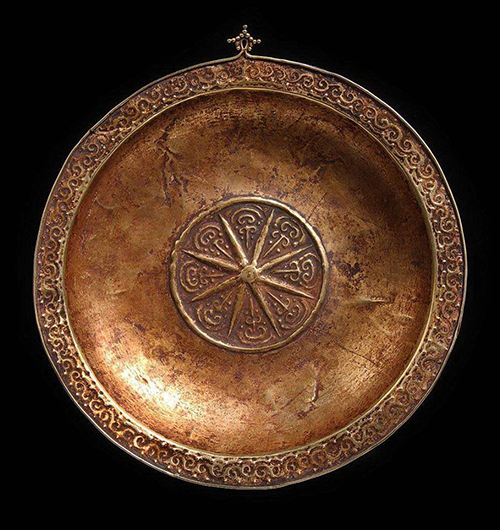This mas piring from Maluku, Indonesia, is made of high-quality gold. It was worn as a pectoral. In comparison with most dishes of this type this example is comparatively heavy (111.6 gr) and firm in its construction, partly because it is relatively compact and not too large. In several larger examples the amount of gold used was not really adequate for the size, which was achieved by pounding out the metal to such an extent that significant tearing could take place. The dish measures 18.5 x 2.5 cm, not taking into account the small finial-like lug attached to the rim, which is not a characteristic feature for these dishes, but most exceptional. The dish has a rich patina due to age and regular use. It shows its age on the front, and even more prominently on the back, where a deep reddish patina has built up over a considerable amount of time—probably over more than 200 years. Frank Wiggers explains that the thickness of the patina was, at least in part, caused by repeated sacrificial-type anointments. The dish can be confidently dated back to the 18th century and quite plausibly even further. Gold dishes of various kinds were certainly made in the southeast Maluku area before 1700, as can be concluded for one thing from comments made by G.E. Rumphius, who lived in Ambon during the second half of the 17th century. This dish was displayed by the Art Gallery of South Australia during 2015-16 in its exhibition TREASURE SHIPS: ART IN THE AGE OF SPICES, in both Adelaide and Perth.

Pectoral (Mas Piring) from Indonesia
Share this: